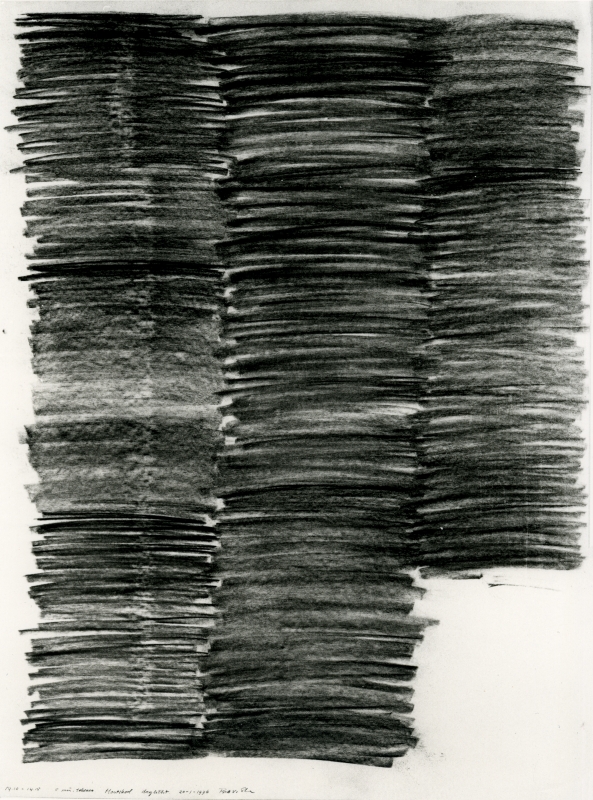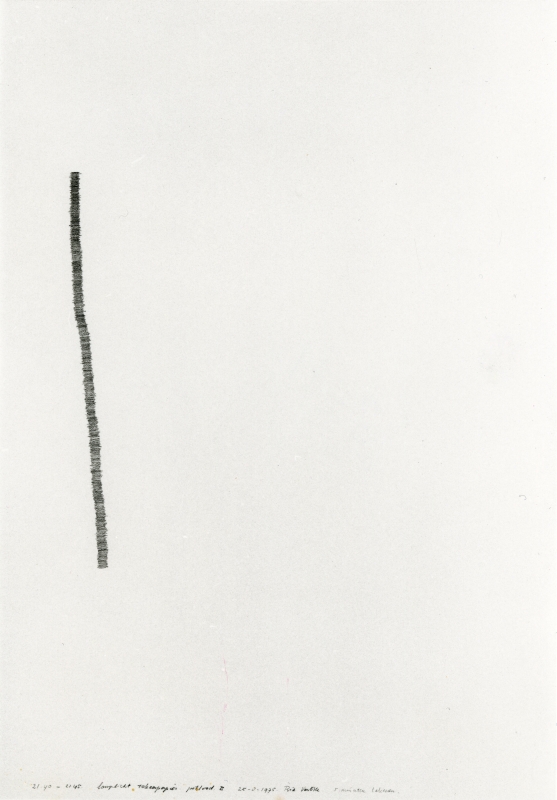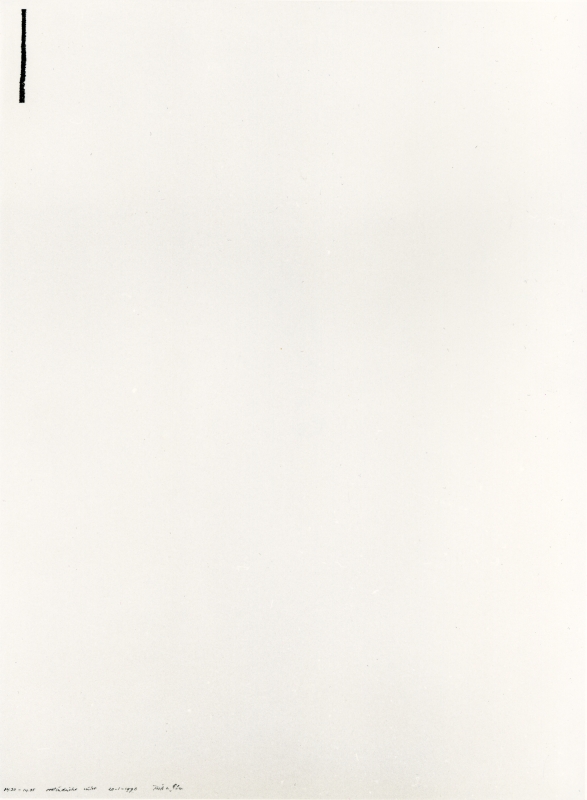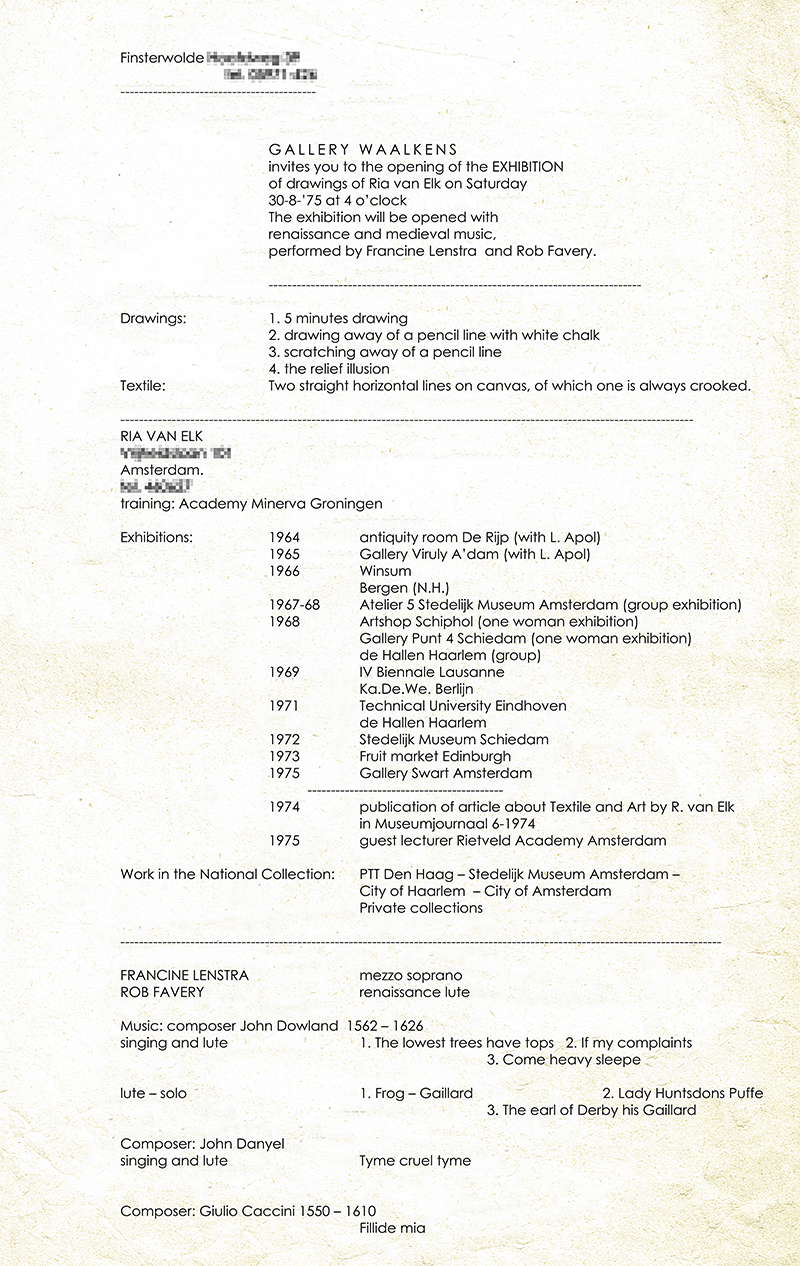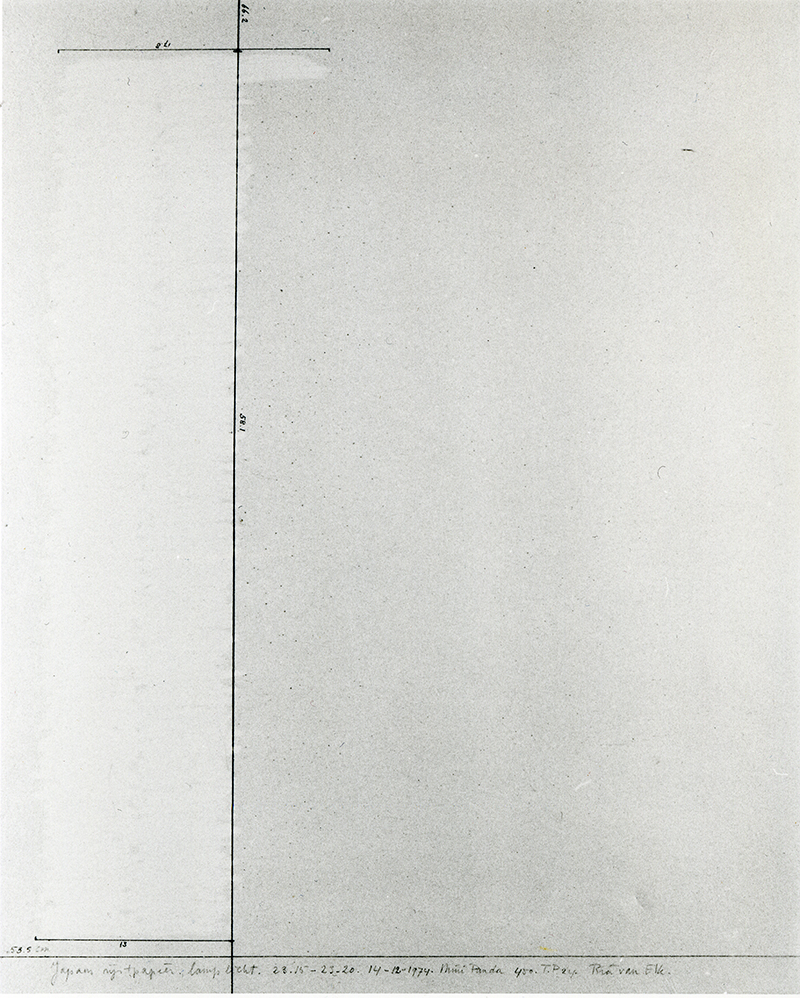|
Marginalia on time and illusion.
text by Antje von Graevenitz accompanying the exhibition in Galerie Waalkens 1975
“Time” is one of the conditions of part of Ria van Elk’s drawings.
Therefore, she prefers to draw in such a way that the result “shows” the reflection of this time – thus as projected time. She does not only note the measured time in minutes, but also fills the span of time – the duration – little by little withdrawn dashed units.
Nevertheless – and there is no way around it – the “projected time” is not present anymore as a timespan, but as an image thereof.
The German philosopher Martin Heidegger posed that time is neither present in the subject nor in the object, but exists in itself and also the French philosopher from the era of existentialism, Maurice Merleau Ponty, concludes in his in 1945 published book “Phenomenologie de la Perception” that “time does not exist within things”. He mentions for instance an old table with scratches and ink stains and concludes: “From themselves, the trails do not point back to the past, they are present now and if I can recover the “then” on account of their marks from whatever event, I can do this only because I have, by means of something else, the meaning of the past, the sense of it within me”.
Thus, it is dependent on my view of time whether I can translate the drawings of Ria van Elk in my imagination, which gives me an illusion of a certain drawing time.
Illusion has its own time.
In an instant I can oversee what is drawn, however the duration of the imagination is nevertheless indeterminable. Ria van Elk has concretely reported her drawing time and connected it in such a way with her drawing units that she does not “narrate” a story with its own imaginable time ending.
And still, the time of imagination of the spectator nevertheless remains undefined.
In so far she has not changed the principle that the objective present (the drawing) is transferred to the subjective present where its quality - in this case the drawn lapse of drawing - converts itself in an illusion of the course of drawing.
Antje von Graevenitz (1974) |
